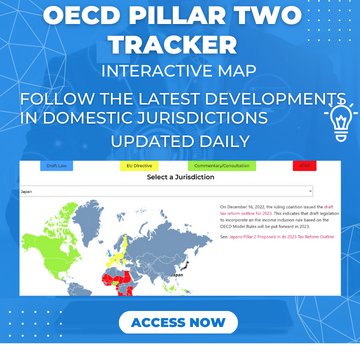The Administrative Guidance (AG) issued on July 17, 2023, provides new rules that apply to transferable tax credits. A transferable tax credit is similar to a refundable tax credit and can generally be used to pay income taxes or can be sold to someone else and the proceeds used to pay its income taxes or other expenses.
The U.S for instance, has a number of transferable tax credits available under the 2022 Inflation Reduction Act.
The original GloBE rules and commentary did not address the treatment of transferable tax credits. In addition IFRS and US GAAP do not provide comprehensive guidance on the accounting treatment.
Given the treatment of tax credits can have a significant effect on the ETR, the AG provides specific treatment.
In particular the AG provides rules governing:
– Marketable Transferable Tax Credits (MTTCs),
– Non-Marketable Transferable Tax Credits (Non-MTTCs), and
– Other Tax Credits (OTCs)
MTTCs are included in the computation of GloBE Income or Loss (ie the same as Qualified Refundable Tax Credits (QRTC)s), whereas non QRTCs, non-MTTCs, and all OTCs are treated as a reduction to Covered Taxes.
When assessing whether a tax credit is a QRTC or a MTTC, its refundability is considered first. If a tax credit meets the refundability criteria and qualifies as a QRTC, it will be defined as a QRTC irrespective of whether it could be also transferable at a marketable price.
The AG provides that a MTTC is a tax credit that can be used by the holder of the credit to reduce its liability for a Covered Tax in the jurisdiction that issued the tax credit and that meets:
– the legal transferability standard; and
– the marketability standard
in the hands of holder.
The legal transferability standard is met for the Originator of a tax credit if the tax credit regime is designed in a way that the Originator can transfer the credit to an unrelated party in the Fiscal Year in which it satisfies the eligibility criteria for the credit or within 15 months of the end of this year.
The legal transferability standard is met for a purchaser of a tax credit if the tax credit regime is designed in a way that the purchaser can transfer the credit to an unrelated party in the Fiscal Year in which it purchased the tax credit.
The marketability standard is met for the Originator of a tax credit if it is transferred to an unrelated party within 15 months of the end of the Origination Year (or, if not transferred or transferred between related parties, similar tax credits trade between unrelated parties within 15 months of the end of the Origination Year) at a price that equals or exceeds the Marketable Price Floor.
The marketability standard is met for a purchaser if that purchaser acquired the credit from an unrelated party at a price that equals or exceeds the Marketable Price Floor. Marketable Price Floor means 80% of the net present value (NPV) of the tax credit, where the NPV is determined based on the yield to maturity on a debt instrument issued by the government that issued the tax credit with equal or similar maturity (and up to 5-year maturity) issued in the same Fiscal Year as the tax credit is transferred (or if not transferred, the Origination Year). For this purpose, the tax credit is the face value of the credit or the remaining creditable amount in relation to the tax credit.
A Non-Marketable Transferable Tax Credit is a tax credit that is transferable but is not a Marketable Transferable Tax (and is not a a Marketable Transferable Tax Credit).
This therefore allows tax credits that do not qualify as refundable to still qualify for the same treatment as QRTCs if they can meet the definition of an MTTC.













